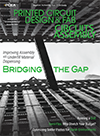Book Reviews
Book Review: Lead-Free Soldering
Author: Jasbir Bath, Editor
Publisher:
299 pages
Publication date: 2007
Reviewer: Bob Willis
Two engineers from Atotech cover solder finishes in detail, illustrating the importance of each selection. Recent surveys have shown that the change in PCB finish can often be one of the most common reasons for failure in lead-free manufacture, ahead of delamination, cosmetic and via failure. Hugh Roberts and Kuldip Johal use a simple methodology to outline the finishes. It is fair to say a large percentage of the text is devoted to gold processes.
Karl Sauter of Sun Microsystems discusses laminates for printed board manufacture. Sun has been actively involved in the discussions on materials, and has spent many years investigating Conductive Anodic Filament phenomena because of the complexity of their product design. The sections deal with the available test methods to assess materials and an interesting case study of accelerated thermal stress testing. There are advantages to new laminates on complex products; however, not all products require high Tg materials.
The assembly section by Sundar Sethuraman discusses the possible changes in manufacture to accommodate lead-free with the potential issues faced by any engineer tasked with product conversion. Sethuraman highlights the need for more profiling and a review of this process. Many engineers have become a little blasé in the need for correct temperature monitoring. One of the surprises is that there is no section covering the growth of selective soldering and the issues associated with lead-free. It fair to say that many companies have adopted pin-in-hole reflow, but selective is growing in popularity.
Wave soldering is deservedly given its own chapter because of the difficulty in converting the process and the many issues it raises in manufacture. Each process step, fluxing, pre-heat, handling and solder bath materials are considered, along with the interaction of materials and process conditions. Advice is given on well-known wave soldering issues like fillet lifting, fillet tearing, pad lifting, and the increased incidence of shorting that can occur in manufacture. Each of the process indicators is mentioned and how the IPC standards criteria change with lead-free joints.
Press Releases
- Saki to Highlight Advanced Inspection Innovation at 39th Nepcon Japan
- ViTrox Welcomes Gemaddis as a New Sales Channel Partner in France
- NCMS Releases White Paper: “Artificial Intelligence to Improve Supply Chain Resilience Throughout American Manufacturing”
- E-tronix Expands Team with Strategic Hires to Strengthen Technical Solutions Support in 2025







